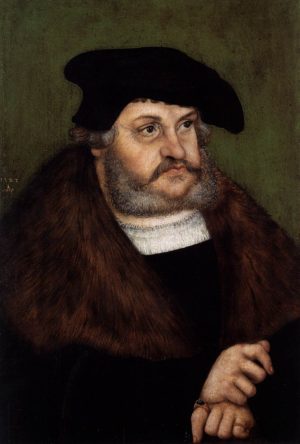Celebrating the 500th Anniversary of the Reformation
Faces of the Reformation: Frederick the Wise

The Catholic Church
As you have read about people who are important in the Reformation history, you have read the name “Frederick the Wise.” Before you read more about Frederick, however, a little history lesson is important to understand. At the time that Luther lived in Germany, much of the world was controlled by the Catholic church and was called “The Holy Roman Empire.” The ruler of the Empire at that time was Charles V. He was elected by special people throughout the Empire called “Electors.” Germany was not a unified country as we know it today, but it was a collection of small territories, each with its own ruler and government. Frederick was ruler of the territory of Saxony. His official title was “Elector of Saxony.” This meant that he was considered a loyal member of the Catholic church and was one of the people who “elected” the Emperor.
Frederick the Wise
At first, it may seem that Frederick was really no friend of the Reformation. As a devout Catholic, he spent much of his life collecting relics of church history. At the end of his life, Frederick had collected over 19,000 relics, and he would put these relics on display for people to see. These relics were things like fragments of the cross, of the manger, and of the swaddling clothes wrapped around Jesus when He was a baby. Frederick had been taught that the more relics he was able to collect, the more time he could deduct from his time in purgatory. Frederick even supported the program of selling indulgences. In his case, he used a portion of the money collected to build a bridge over a river to get to the university he built in Wittenberg. The man he hired to sell the indulgences was John Tetzel.
Frederick was fine with the practice of selling indulgences as long as the money collected could be used in his territory of Saxony. However, John Tetzel, on orders from Pope Leo, began sending the money he collected to Rome so that the new cathedral, St. Peter’s, could be built. This, Frederick did not like and soon, he decreed that if Tetzel wanted to sell indulgences, he would have to do it outside of Saxony! This prompted Martin Luther to post his 95 theses on the church door of Wittenberg where he attacked the selling of indulgences along with other practices of the church that were not scriptural.
Saving Luther
Frederick saw in Martin Luther, not just a man who was trying to bring the church back to Scriptural truths, but also as a person who could help Frederick’s ideas of a truly free German state. When Luther was called to the Diet of Worms and there declared a heretic of the church, it was Frederick who arranged for Luther to be kidnapped and hidden in Wartburg castle. Frederick wanted Luther to remain safe and to continue his attacks against the church, and the power of the church.
Throughout the other territories of Germany, other rulers considered Frederick with respect for his wisdom and when they saw how Frederick protected and supported Luther, they also listened to him and supported Luther’s ideas, especially at the Diet of Augsburg.
There is no evidence that Luther and Frederick the Wise ever actually met each other. Luther owed his very life and the continuing of his work of reforming the church to the protection of Frederick, but there is also no evidence that Frederick renounced his Catholic faith. It is known that at the end of his life, Frederick received Holy Communion according to the teachings of the Reformation, receiving both the body and blood of Christ, in with and under the bread and wine of the altar.
Frederick never married and so had no heirs to succeed him. Frederick was born in 1463 and he died in Lochau, Germany in 1525.
From Trinity Lutheran Church Faribault, June, 2017 Newsletter
RELATED POSTS

New Audio and Video Podcasts
Audio and Video Podcasts are Here! We know that sometimes it is not easy toRead More

LCMS Ministry to the Armed Forces
From the LCMS Ministry to the Armed Forces. We invite all of you to readRead More